If you use the classical model of education {or Charlotte Mason}, you are most definitely familiar with copywork. I’ve met some die-hard fans of copywork and I have to admit, I’m not one of them. For me, copywork is too rigid to use as my main source of writing instruction. I much prefer an approach to writing that treats kids as authors.
But I do understand that there are great benefits in giving children a writing model for all kinds of writing skills. That’s why I’m an in love with what I am calling interactive copywork. When planned just right, interactive copywork can combine narration, dictation, AND copywork! Talk about bang for your buck!
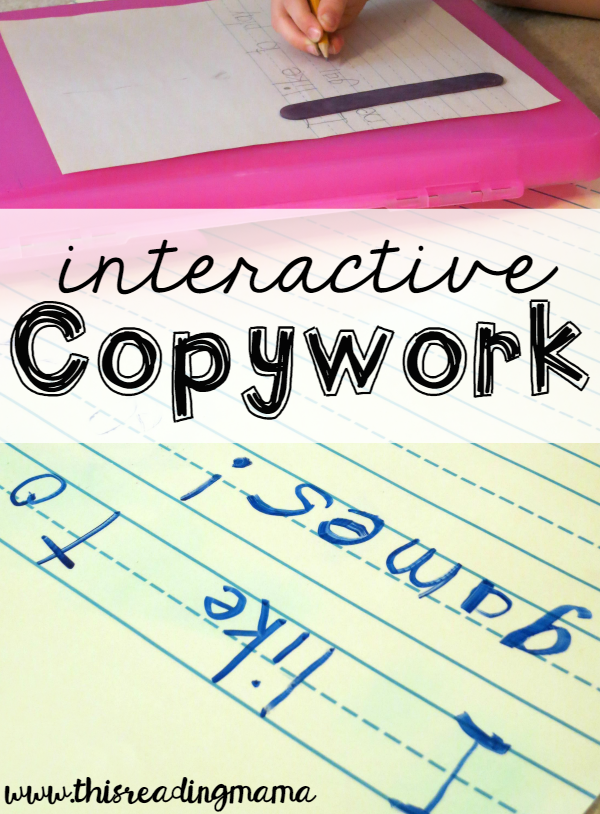
*This post contains affiliate links.
I have so many favorite things about interactive copywork. Just one of them is that interactive copywork includes the child in the entire writing process– from coming up with writing topics to doing the actual writing. It can also use the ideas of the child, giving life to his words and ideas. I have found that including the child in the process naturally heightens student interest, a HUGE motivator for many kids.
What is Interactive Copywork?
Before I jump in, I wanted to quickly define copywork. When the teacher/parent picks a passage from a well-written text and asks the child to copy it down word-for-word on another piece of paper, you have copywork. The purpose is to create a “perfect copy”, with correct capitalization, punctuation, spacing, and spelling.
Interactive copywork includes the child in every step. You and the child decide what you will write, and together you share the pen to write it down. {This is also known as interactive writing.} What you have written together then becomes the source of copywork for the child.
Step-by-Step Interactive Copywork
Below is a “guide” on how I use interactive copywork to teach writing. There is nothing magic about doing it the way I do. That’s the beauty of it. Please feel free to take what you see and adapt it for your student(s).
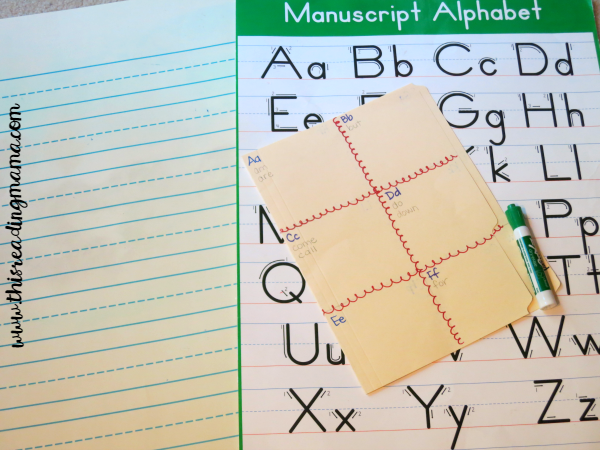
1. Gather your supplies.
When I use interactive copywork with my Kindergartner and sometimes 1st grader, they each bring their word wall folders {so I know some of the words I can hold them accountable to spelling}. The other supplies I always have are our handwriting wall chart, our large handwriting paper poster board {a large paper chart will also work}, and a writing utensil.
2. A prompt or idea.
Examples can include, but are not limited to: a story you just read together that leads to a retelling {or narration}, an event such as a field trip or family trip, a letter to someone, writing that corresponds with a science or history lesson, or an idea of the child.
Sometimes the idea is mine. Sometimes it’s the child’s. But my goal is to make it as authentic as possible in that it relates to what we’re learning/reading, something going on in our day, or to the child’s interests in some way.
I will add that we don’t always write the entire sentence together. Sometimes, we write the stem together such as, “My favorite part of the field trip was…”, they copy that and finish the sentence on their own.
3. Writing together.
This is the fun part! TOGETHER, we write the text. I literally share the pen as we take turns writing the text. As we write, we talk about capital letters, letter formation, spelling, sight words, spacing, vocabulary, grammar — this part of the lesson is rich with all kinds of teachable moments.
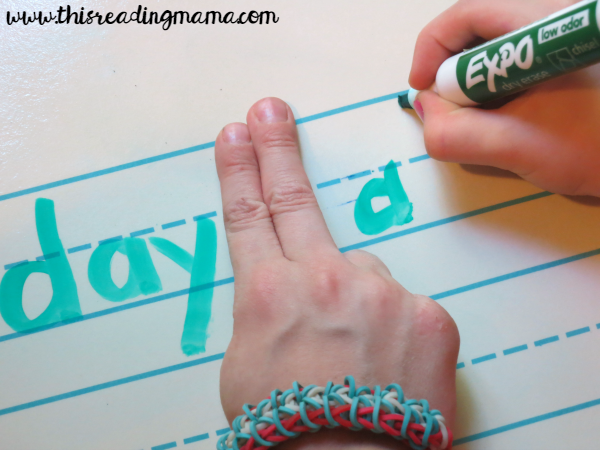 During this time, I hold kids accountable to what they know. We use our word walls. We talk about the phonics patterns we’ve studied. We use our handwriting chart as a guide. I do not allow invented spellings or random capital letters during this time because the purpose is to model conventional writing and spellings.
During this time, I hold kids accountable to what they know. We use our word walls. We talk about the phonics patterns we’ve studied. We use our handwriting chart as a guide. I do not allow invented spellings or random capital letters during this time because the purpose is to model conventional writing and spellings.
If my Kindergartner’s sentence that is not grammatically correct, we change it before we write it. And often times, we will substitute more difficult synonyms for those boring words, like happy, which adds to their vocabulary.
4. Re-reading our writing.
As we work, we often re-read what we’ve written, as this is what writers naturally do. And when we’re finished, we pull out a pointer {or our “new eyes”} and read our writing. This teaches kids that re-reading your writing is important. Sometimes, we make a revision here or there.
5. Copywork.
Once the work is complete and been re-read, I remind them of a few things such as, “Where do we see capital letters?” or “What goes in between your words?” And then I set them free with handwriting paper and a craft stick {for space} to copy it. Depending on the length of the text, sometimes the copywork portion is saved for the next day.

6. Draw a picture {optional}.
Sometimes, they want to draw a picture to match their writing. They don’t always want to and I don’t require it.
7. Read what you wrote.
Once again, I have them read what they have written out loud. This is especially important if they have individually finished a stem or prompt that we started together.
More Writing Ideas You May Enjoy:
- Preschool and Kindergarten Writing Lessons {10-week series}
- Simple Writing Lessons for 1st & 2nd grades {12-week series}
- CUPS Editing Checklist
- Roll and Write a Complete Sentence
- Roll and Write Longer Sentences
~Becky
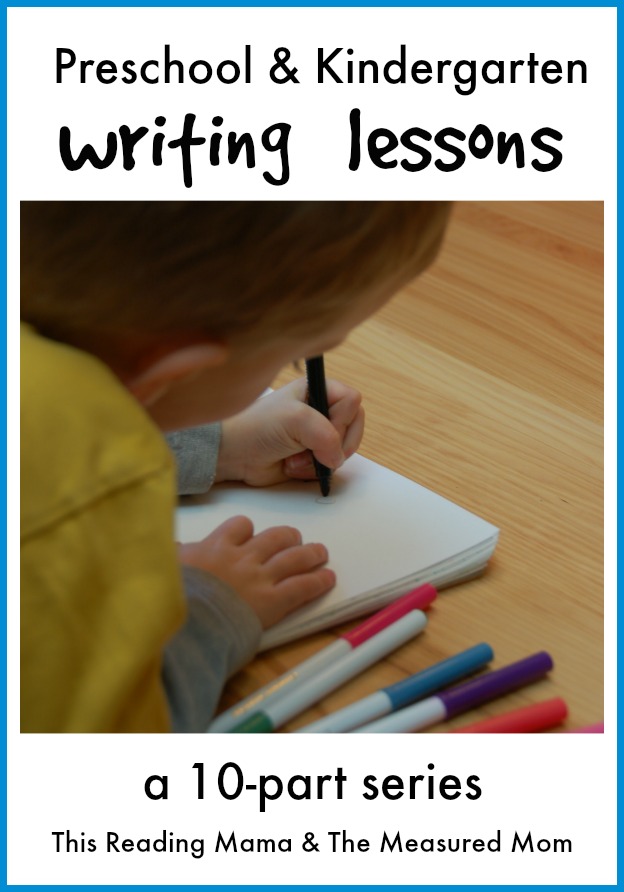
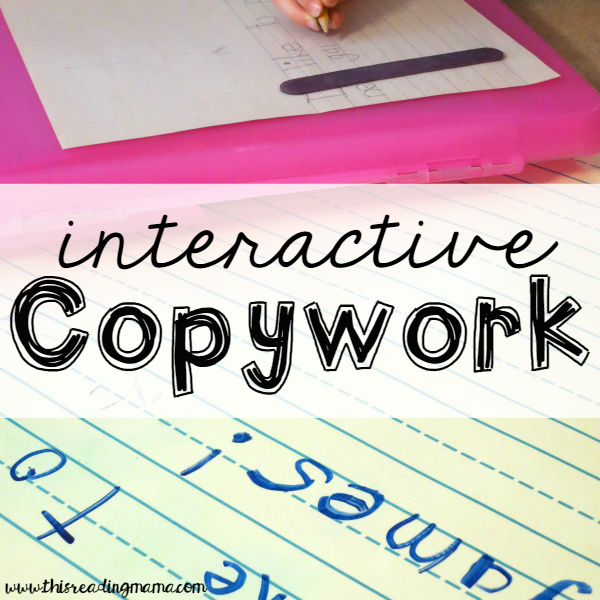
I love this! I am not a fan of traditional copywork either, but this is different – it requires children to actively think and engage with what they’re writing. There are so many teaching opportunities here!
Oh I love this! I use copywork as a way for my kids to practice their bible verses (to help with memorization and handwriting). But I really like this idea! I think this will make writing much less painful for my son, haha!
I hope it will work for him! 🙂
I have recently taken interest in what I could achieve with copy work,and it worked for my pupils.we used traditional copy work of alliterative sentences.After the copy work,we composed a story using the sentence as a prompt.
For example,Every evening Ellie eats eggs.We came up with a story about Ellie the Elephant who ate a snake’s egg.
What a great idea! I love it!
Loved this! Thank you so much for all you do! We follow you closely in our homeschool.
You’re welcome! 🙂